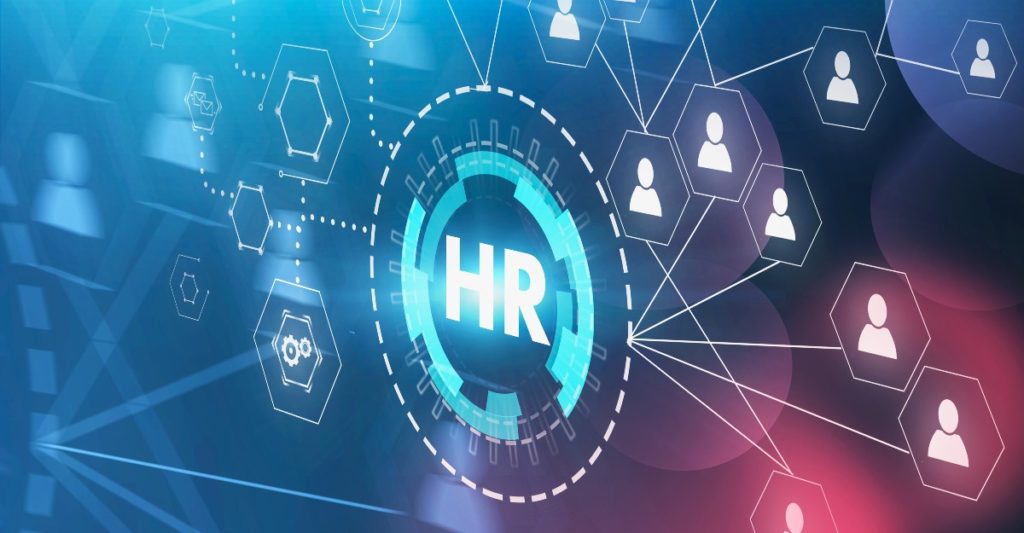Human resources digital transformation is more important than ever. Why? Because people are the backbone of your company’s success, which means the processes you rely on to support those people are just as important. In this blog, we discuss three signs that it’s time for your HR department to make a change.
Digital transformation is all about helping a company take its operations to the next level by utilizing state-of-the-art technology and comprehensive data to make decisions and work smarter and faster. According to Techopedia, digital transformation uses “digital technology and data analytics to make data-driven decisions, improve operational efficiency, streamline work and gain (or retain) a competitive edge in business.”
But in order for a digital transformation to truly succeed, HR needs to be involved. Here’s what that looks like.
What Is a Human Resources Digital Transformation?
Human resources digital transformation is the process of turning manual HR processes into automated, digital ones. When this happens, data guides all aspects of HR, including:
- Benefits
- Hiring
- Learning and development
- Payroll
- Performance management
- Recognition and rewards
When technology and data drive your HR department—just as it does the rest of your organization—you will be better equipped to keep up with industry trends and reach new heights. Employees will be happier and more likely to stay, which helps the company grow and succeed.
But in many company-wide digital transformations, companies tend to neglect HR because they lack a clear objective and don’t ask the right questions.
As organizations scale and take on more employees, implementing new technology is a clear solution, but a new tool is not necessarily a transformation. A successful transformation requires more than a one-size-fits-all software approach. It’s about transforming not only HR operations but also the workforce and how work is done,
So how do you know if you need a true human resources digital transformation?
3 Signs You Need a Human Resources Digital Transformation
When your HR department has been operating the same way for years, it can be hard to notice that it’s time for a serious change. Unfortunately, too many companies wait until it’s too late. If any of these situations are happening in your HR department, it’s a sign you need a human resources digital transformation:
- Manual processes
- Outdated technology
- Lack of data-first decisions
1. Manual Processes
Too many HR departments rely on complex manual processes to operate. All this does is stunt the growth of the business because it takes a long time to get anything done.
For example, having to update a cumbersome spreadsheet manually is inefficient and prone to errors. Instead, you’re better off automating that process so that your HR team can spend its time on other tasks, such as hiring and providing employees with a top-notch HR experience.
2. Outdated Technology
Another common sign you need an HR overhaul is that your technology is out of date. When your HRIS/HCM has limited functionality and can’t grow and evolve as you grow and evolve, your company will struggle to keep up with the industry.
As mentioned, however, you can’t just buy the latest HRIS/HCM and leave it at that. You must think critically about how key HR functions—including compensation, rewards and performance management—all play into keeping your employees happy for the sake of the company’s success. This is because these areas require a more tailored and precise solution, which most HRIS/HCM vendors lack. Core HR suites can cover high level HR processes, but you also need technology that transforms these three complex, niche areas. Otherwise, you will remain stuck supplementing your HR suite with spreadsheets, PDFs and SharePoint for these critical functions. Again, manual tools that point to the need for a transformation.
3. Lack of Data-First Decisions
Modern companies make data-driven decisions. This provides justification to employees who, now more than ever, keep a watchful eye on HR activities. Data-backed decisions around compensation, performance and rewards will help increase employee morale.
If a company operates a certain way because “that’s how it’s always been,” employees will become demoralized and less likely to stay. For example, if data shows that an employee is performing above expectations, but they still only get a standard salary increase because that’s how the company has always done it, the employee will look for another job with a company that actually shows they value them.
So, what does a successful human resources digital transformation look like?
HR Digital Transformation Success
If you want your human resources digital transformation to work, you need more than just software. You need to radically change how you get work done. In short, your solution must address the above three problems by:
- Automating processes so that less time is spent on repetitive tasks
- Improving the employee experience with current and agile technology
- Providing actionable data
The best part about this type of transformation is that it doesn’t have to completely replace your existing technology. It’s about transforming the way you leverage technology tools to advance your company. This means your solution for niche HR areas like compensation, performance and rewards should also integrate and enhance existing core HCM/HRIS systems.
Conclusion
When it comes to digital transformations, HR departments are often left behind. If you want your company—and your employees—to succeed, it’s time for a human resources digital transformation of your own.
Keep budgets, employees and communications on track – without ever having to leave your core HRIS or HCM suite – with HRSoft. See how it works by requesting a demo today.



